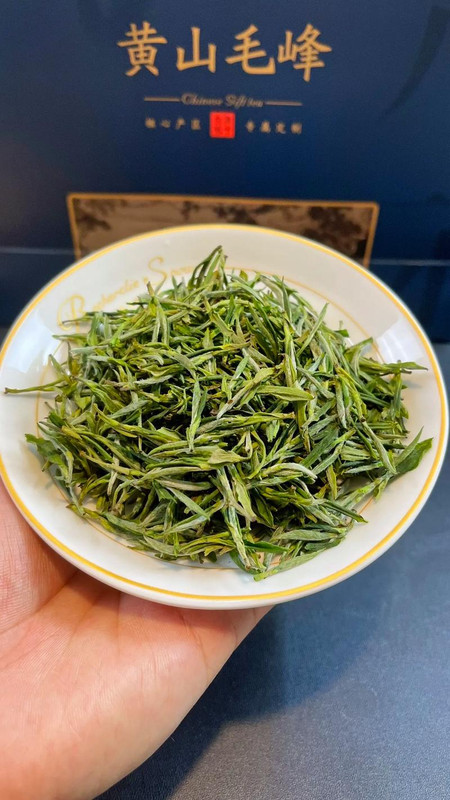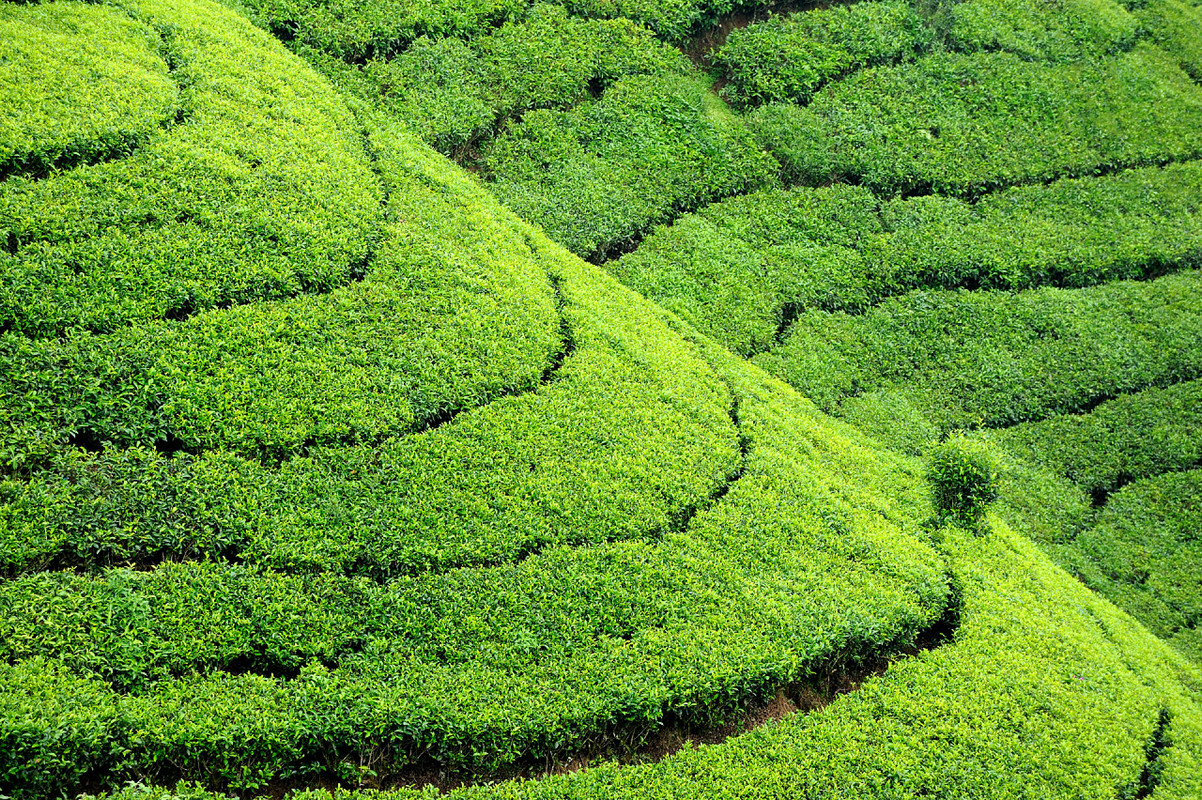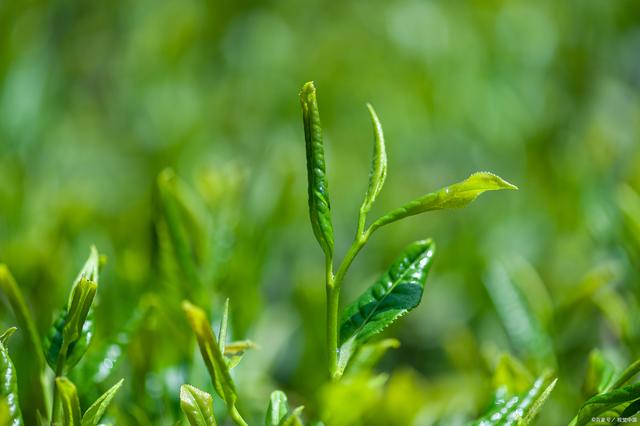1. Characteristics: The Aesthetic of Nature
Huangshan Maofeng is a paragon of Chinese green tea aesthetics. Its leaves, plucked from the Camellia sinensis var. sinensis plant, are characterized by a delicate curve resembling a sparrow’s tongue, with a silvery-white down covering the buds—a visual nod to its name (“Fur Peak”). When brewed, the liquor transforms into a pale jade hue, exuding floral (orchid, lilac) and vegetal (chestnut, edamame) aromas. The taste profile balances freshness with depth: an initial briskness akin to morning dew mellows into a lingering sweetness, often described as “returning gan” (甘), a Chinese term for the sweet aftertaste that coats the throat.

2. History: A Royal Legacy
The tale of Maofeng begins in the Qing Dynasty (1644–1912). Legend credits tea merchant Xie Zheng’an with refining the craft in the 1870s, though historical records suggest its roots trace to the Ming Dynasty’s tribute tea system. By 1955, it earned national recognition as one of China’s “Ten Famous Teas,” cementing its status. Its cultural cachet peaked during the 1972 Nixon visit to China, when Mao Zedong gifted Maofeng to the U.S. delegation, symbolizing diplomatic goodwill.
3. Origin: The Sacred Peaks of Anhui
Nestled in the UNESCO-listed Huangshan (Yellow Mountain) range, the tea thrives in microclimates where mist, rain, and rocky terrain converge. Core production centers include:
- Tangkou Township: The spiritual heartland, where tea gardens cling to slopes above 600 meters.
- Fukang Village: Famed for its “cloud-mist tea,” harvested from bushes over a century old.
- Zhaixi County: A newer hub utilizing organic farming practices to meet global demand.
The region’s granite-derived soils, rich in minerals, impart a mineral undertone to the tea, while frequent cloud cover filters sunlight, slowing growth and intensifying flavor compounds.
4. Production Process: Artistry Meets Precision
a. Plucking (清明前后):
Only the tender bud and one adjacent leaf are harvested during Qingming Festival (early April), ensuring minimal bitterness.
b. Withering (晾青):
Leaves are spread on bamboo trays for 4–6 hours, reducing moisture by 30% and softening cell walls.
c. Fixation (杀青):
A pivotal step where leaves are tossed in woks at 220–250°C for 3–4 minutes, halting enzymatic oxidation. Masters rely on touch and scent—the leaves must emit a chestnut-like aroma without scorching.
d. Rolling (揉捻):
Gentle hand-rolling shapes the leaves into spirals, rupturing cells to release juices that will later infuse the brew.
e. Drying (烘焙):
A two-stage process:
- Initial Roast (毛火): 100°C for 20 minutes in bamboo baskets.
- Final Roast (足火): 80°C for 3 hours, locking in aroma and reducing moisture to 5%.
5. Brewing Method: The Ceremony of Subtlety
- Water Quality: Use spring or filtered water (pH 6.5–7.5).
- Temperature: 80°C (176°F) to avoid scalding delicate buds.
- Tea-to-Water Ratio: 3g tea per 150ml water (adjust to taste).
- Infusion Time:
- 1st infusion: 1 minute (captures floral notes).
- 2nd–3rd infusions: 1.5–2 minutes (develops chestnut sweetness).
- Vessel: Glass or porcelain gaiwans best showcase the leaves’ unfurling dance.
6. Authentication: Separating Authenticity from Imitation
- Visual Cues: Genuine Maofeng has a “dragonfly head”—a curved stem at the base of the bud, indicating hand-plucking. Counterfeits often lack this feature.
- Aroma: Authentic leaves emit a fresh, orchid-like fragrance; artificial scents in low-grade teas smell cloying.
- Liquor: Premium grades yield a clear, jade-green brew; inferior teas produce murky, yellow-tinged liquids.
- Leaf Expansion: After brewing, leaves should expand fully, revealing intact buds and uniform size.
7. Grading Standards & Pricing
Maofeng is graded by appearance, aroma, and taste:
- Supreme Grade (特级): Uniform buds with abundant down. Price: 50–100/50g.
- Grade I (一级): Buds with one adjacent leaf. Price: 30–60/50g.
- Grade II–III (二级–三级): Larger leaves, fewer buds. Price: 15–40/50g.
Price Drivers:
- Altitude: Tea from 800m+ gardens commands a premium.
- Harvest Time: Pre-Qingming (明前茶) teas fetch 3x post-Qingming prices.
- Certification: Organic or GI (Geographical Indication) tags increase value.
8. Health Benefits: A Brew for Wellness
- Antioxidant Powerhouse: Rich in catechins (EGCG) that combat free radicals.
- Metabolic Boost: Caffeine and L-theanine synergize to enhance focus without jitters.
- Digestive Aid: Traditionally used to alleviate bloating and aid fat digestion.
- Oral Health: Polyphenols inhibit bacteria linked to cavities and bad breath.
Epilogue: The Tea That Transcends Time
Huangshan Maofeng is more than a beverage—it is a repository of Chinese culture. From the hands of Qing Dynasty artisans to the teacups of modern wellness enthusiasts, it embodies harmony: between human and nature, tradition and innovation. As climate change and market demands test its future, the legacy of Maofeng endures—a testament to the resilience of craft and the timeless allure of a cup steeped in mist and mountain magic.



